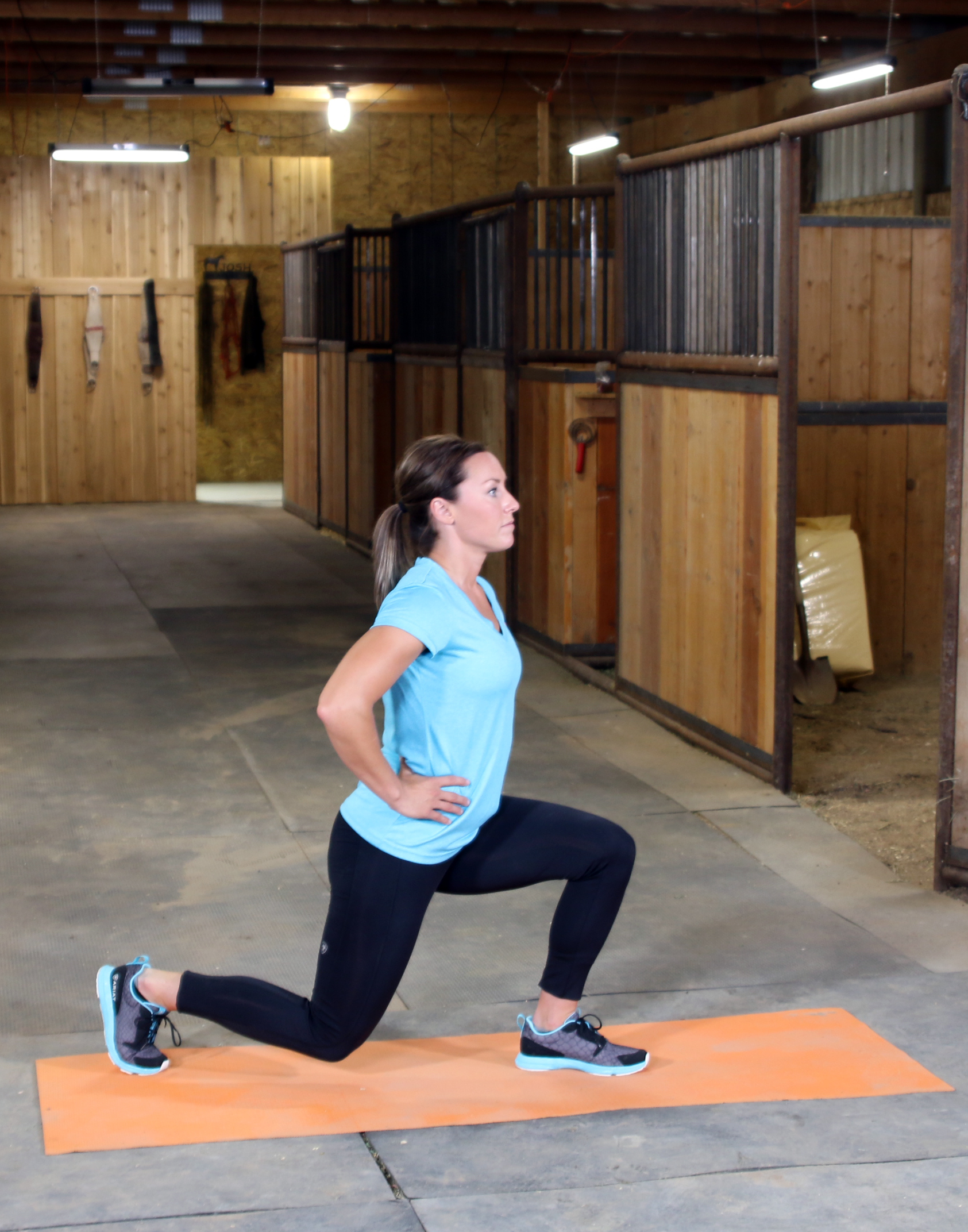If you find yourself too tired to cue properly, maintain energy through a long trail ride or show day, or even have difficulty completing all of your chores, your lack of fitness becomes more than just a personal-health issue. It’s a riding problem. You can’t be effective in the saddle if you don’t have the physical strength to sit up or cue properly, or if you can’t sustain the pressure or position long enough for your horse to receive the message.

Riding strength starts with a strong core. Your abs and low-back keep you upright, balanced, and stable in the saddle. Along with muscular strength, endurance allows you to drive your horse forward for extended periods or in involved gaits, such as the extended trot. Your glutes, hamstrings, and hips also help you keep his forward movement or sit a powerful stop. The insides of your legs, or adductors, squeeze and grip the saddle so you can ride with cadence, rather than bounce around as you trot. Your shoulders, upper back, and the muscles along your spine and lower back help you maintain your posture: upright, chest up, and shoulders back. Proper posture creates eye-appeal in the arena, but more importantly it keeps your weight distributed in the center of your saddle. To ride well, your entire body must stay engaged. If you lack the strength and stamina to do this, you won’t be able to enjoy your horse to his, or your, full potential.
It’s also impossible to get your horse in his best shape possible if you aren’t physically fit to do so. As you prepare for a show or a trail ride, you must condition your horse. This is to avoid injury, most importantly, but it also ensures that he can perform well. He’ll have stamina for a long trail adventure, or won’t be worn out by his warm up when it comes time to give his all in the show pen if he’s conditioned. To get him to this point, you over-prepare for the demand. Meaning, if the trail ride will last an hour, your horse needs to be physically fit enough to go longer: an hour and a half or two hours, for example. If you’re not able to ride for the requisite two hours, or you can, but get sloppy halfway through the ride, you do your horse a disservice. He won’t perform as well as he could and you put him at risk of injury.

To increase your endurance, exercise. Choose sustained activities, such as running, cycling, Zumba, and even yoga. Find a routine that you enjoy and that works for you so you stay with it. Weight lifting and HIIT (High-Intensity Interval Training) is also an effective way to elevate your heart rate, and increase your stamina and strength for the saddle. Just like for your horse, exercise is difficult when you first start. Congratulate yourself each time you put in the effort to improve your fitness, and consequently, your riding. As you see the benefits, and your conditioning improves, continue to challenge yourself. It’ll transfer to the saddle.
The exercise sequences in the Saddle Strong series will start you down the path to success. To mix up your routine and keep yourself interested after the six-week course, go online to find more circuits at Western Workouts.






